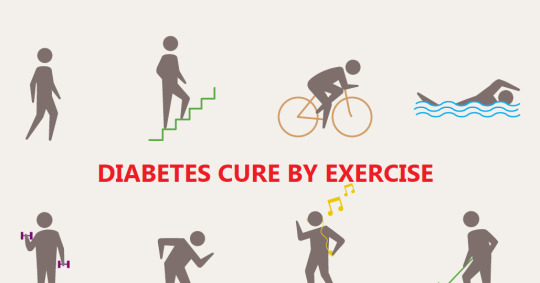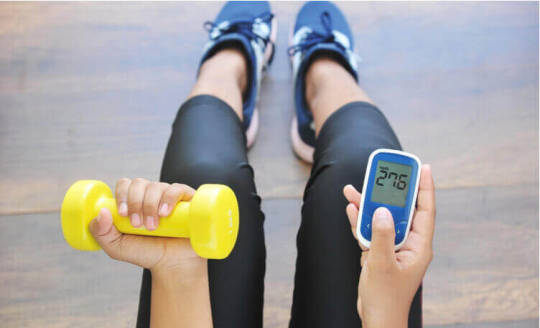#supplement for diabetics
Explore tagged Tumblr posts
Text
#supplement for diabetics#diabetic nutritional supplement#diabetic support supplement#best supplement to lower blood sugar#Best medicine for diabetes#supplement for diabetic patient
1 note
·
View note
Text
Hey y'all! Another weird question for you: How long do you have to fast for a blood sugar reading to count as a fasting blood sugar measurement? Also, does drinking soda (like, full sugar soda) slowly over the time before the blood test count as not-fasting? Asking because I keep testing* in the fasting blood sugar range when I am pretty sure I am not supposed to. Like, two hours after eating a meal when I've been slowly drinking soda the whole intervening time, or half an hour after drinking a whole full-sugar gatorade *with the home blood sugar test thing, not like doctor's office tests. though I test in the fasting range there too? I do know the word for the tester thing but I am brain fogged at the moment
#the person behind the yarn#blood mention#food mention#like. obliquely? but sort of there so I tag it just in case#I have a new personal record for lowest blood sugar when testing at home now! 91#I ate lunch two hours ago had some goldfish crackers after that and have been slowly sipping on a dr pepper#(as well as water I have two drinks going at all times)#and my blood sugar is STILL low#so I am eating some candy and then I will eat more goldfish and make sure I get extra protein with dinner#but seriously what the heck#this is not how blood sugar works for other people right????#it's not just always low but technically not hypoglycemic?????#I do not have diabetes I have been checked for that. a lot. it's probably the second or third most common thing they test me for#but nope whatever my problem is it's not that my body just yearns to yeet nutrients as efficiently as possible without retaining them#salt and sugar both apparently. also vitamin D but that one could just be that I don't go outside much#I take supplements for that it's fine#but there's not really salt and sugar supplements?#okay there are. I take the salt pills. but sugar is iffier. like there are sugar pills but I suspect#that's probably not the best way to increase my blood sugar
33 notes
·
View notes
Text
A Comprehensive Diet Plan for Managing Hypoglycemia
Introduction
Hypoglycemia, often referred to as low blood sugar, is a condition characterized by abnormally low levels of glucose in the blood. Glucose is the primary source of energy for the body’s cells, and maintaining its levels within a healthy range is crucial for optimal functioning. Hypoglycemia can cause symptoms like shakiness, dizziness, confusion, and in severe cases, unconsciousness. A well-structured diet plan is essential for managing hypoglycemia, as it helps stabilize blood sugar levels and prevent episodes of low blood sugar.
Understanding Hypoglycemia
Before diving into the diet plan, it’s important to understand the types and causes of hypoglycemia. Hypoglycemia can be classified into two categories:
Reactive Hypoglycemia: This occurs within a few hours after eating, often due to an excessive insulin response that drives blood sugar levels too low.
Fasting Hypoglycemia: This type occurs when blood sugar drops after fasting or going without food for an extended period.
Common causes of hypoglycemia include diabetes management (particularly insulin or medication use), prolonged fasting, excessive alcohol consumption, and certain medical conditions. Regardless of the cause, a balanced diet plays a critical role in managing the condition.
Key Principles of a Hypoglycemia Diet Plan
The goal of a diet plan for hypoglycemia is to maintain steady blood glucose levels throughout the day. Here are the key principles:
Frequent Small Meals: Eating smaller, more frequent meals (every 3-4 hours) helps prevent large fluctuations in blood sugar levels. This approach keeps glucose levels stable and provides a constant source of energy.
Balanced Macronutrients: Each meal should include a combination of complex carbohydrates, protein, and healthy fats. This balance helps slow the absorption of glucose into the bloodstream and provides a steady release of energy.
Focus on Complex Carbohydrates: Complex carbohydrates, such as whole grains, vegetables, and legumes, are digested more slowly than simple sugars, preventing rapid spikes and drops in blood sugar levels.
Include Protein in Every Meal: Protein helps slow down carbohydrate absorption and keeps you feeling full longer. Good sources include lean meats, fish, eggs, dairy products, legumes, and nuts.
Healthy Fats: Incorporating healthy fats like those found in avocados, nuts, seeds, and olive oil can help stabilize blood sugar and provide long-lasting energy.
Avoid Simple Sugars and Refined Carbs: Foods high in refined sugars and simple carbohydrates, such as candy, sugary drinks, and white bread, can cause rapid spikes followed by sharp drops in blood sugar levels.
Stay Hydrated: Proper hydration is essential, as dehydration can worsen the symptoms of hypoglycemia. Water, herbal teas, and electrolyte-balanced drinks are good choices.
Sample Diet Plan for Hypoglycemia
Here’s a sample one-day meal plan designed to help manage hypoglycemia:
Breakfast:
- Oatmeal: Made with rolled oats, topped with sliced almonds, chia seeds, and a handful of fresh berries.
- Greek Yogurt: A small serving of unsweetened Greek yogurt for added protein.
Mid-Morning Snack:
- Apple Slices with Nut Butter: An apple sliced and spread with almond or peanut butter.
- Hard-Boiled Egg: For extra protein.
Lunch:
- Grilled Chicken Salad: Mixed greens with grilled chicken, quinoa, cherry tomatoes, cucumbers, and a dressing made from olive oil and lemon juice.
- Whole-Grain Crackers: A small serving for added complex carbohydrates.
Afternoon Snack:
- Hummus with Veggies: Carrot sticks, celery, and bell pepper slices dipped in hummus.
- Mixed Nuts: A small handful of unsalted mixed nuts.
Dinner:
- Baked Salmon: A portion of baked salmon served with steamed broccoli and sweet potatoes.
- Brown Rice: A small serving for added complex carbohydrates.
Evening Snack:
- Cottage Cheese: A small serving of cottage cheese topped with a few slices of avocado.
- Berries: A handful of mixed berries.
Additional Tips
Monitor Portion Sizes: Eating too much at one time can cause blood sugar levels to spike and then crash. Pay attention to portion sizes and avoid overeating.
Limit Alcohol: If you consume alcohol, do so in moderation and never on an empty stomach, as it can lower blood sugar levels.
Keep Emergency Snacks Handy: In case of a hypoglycemic episode, keep snacks like glucose tablets, juice boxes, or a small pack of crackers nearby.
Consult with a Healthcare Professional: It’s important to work with a healthcare provider or a registered dietitian to create a personalized plan that suits your individual needs and medical condition.

Simple Technique To Help Manage Blood Sugar
Conclusion
Managing hypoglycemia through diet requires careful planning and consistency. By eating balanced meals regularly, focusing on nutrient-dense foods, and avoiding simple sugars, individuals with hypoglycemia can better control their blood sugar levels and reduce the risk of low blood sugar episodes. Remember, each person’s nutritional needs are different, so it’s essential to tailor the diet plan to your specific condition and lifestyle.
#health tips#healthcare#diabetes supplement#diabetic support supplement#blood sugar supplement#diabetes#hypoglycemia
7 notes
·
View notes
Text
How Regular Exercise Reduces the Risk of Diabetes
Diabetes is a significant health concern affecting millions globally, but the good news is that regular exercise can play a pivotal role in reducing the risk of developing this chronic condition. Regular physical activity is beneficial not only for weight management and cardiovascular health but also for blood sugar regulation and insulin sensitivity. In this article, we will explore how regular exercise helps reduce the risk of diabetes and provide tips for incorporating exercise into your daily routine.

Understanding Diabetes and Its Risk Factors
Diabetes, particularly type 2 diabetes, occurs when the body becomes resistant to insulin or when the pancreas is unable to produce enough insulin. This leads to elevated blood sugar levels, which can cause serious health complications over time. Risk factors for type 2 diabetes include obesity, a sedentary lifestyle, poor diet, and a family history of diabetes.
The Role of Exercise in Diabetes Prevention

Improves Insulin Sensitivity: Regular exercise helps improve the body’s sensitivity to insulin. When you exercise, your muscles use more glucose, reducing blood sugar levels. Over time, this increased glucose uptake by muscles makes your body more responsive to insulin, thereby reducing the risk of insulin resistance.
Helps with Weight Management: Maintaining a healthy weight is crucial in preventing diabetes. Exercise helps burn calories, build muscle, and reduce body fat. Even modest weight loss can have a significant impact on reducing diabetes risk. For individuals who are overweight or obese, losing 5-10% of body weight can greatly improve insulin sensitivity and lower blood sugar levels.
Regulates Blood Sugar Levels: Physical activity helps regulate blood sugar levels by promoting the uptake of glucose into muscle cells. Both aerobic exercises, such as walking, running, and swimming, and resistance training, such as weightlifting, are effective in managing blood sugar levels. Regular exercise also helps to stabilize blood sugar levels throughout the day, reducing the risk of spikes and crashes.
Reduces Visceral Fat: Visceral fat, the fat stored around internal organs, is strongly linked to insulin resistance and type 2 diabetes. Regular exercise helps reduce visceral fat, improving overall metabolic health and lowering diabetes risk.
Enhances Cardiovascular Health: People with diabetes are at a higher risk of developing cardiovascular diseases. Regular exercise strengthens the heart and improves circulation, reducing the risk of heart disease, stroke, and other cardiovascular complications.
Types of Exercise for Diabetes Prevention

Aerobic Exercise: Activities like brisk walking, running, cycling, swimming, and dancing increase your heart rate and help burn calories. Aim for at least 150 minutes of moderate-intensity aerobic exercise per week.
Resistance Training: Strength training exercises, such as weightlifting, bodyweight exercises (e.g., push-ups, squats), and resistance band workouts, help build muscle mass and improve insulin sensitivity. Incorporate resistance training at least two days a week.
Flexibility and Balance Exercises: Activities like yoga and tai chi enhance flexibility and balance, reducing the risk of injuries and improving overall physical fitness. These exercises also promote relaxation and stress management, which are important for diabetes prevention.
Tips for Incorporating Exercise into Your Routine
Start Slow: If you’re new to exercise, start with small, manageable goals. Gradually increase the intensity and duration of your workouts as your fitness level improves.
Find Activities You Enjoy: Choose exercises that you enjoy to make it easier to stick with your routine. Whether it’s dancing, hiking, or playing a sport, enjoyment will keep you motivated.
Make It a Habit: Consistency is key. Schedule regular workout sessions and treat them as non-negotiable appointments.
Stay Active Throughout the Day: Incorporate physical activity into your daily routine by taking the stairs, walking during breaks, or cycling to work.
Monitor Progress: Keep track of your workouts and progress. Celebrate milestones to stay motivated.
Conclusion
Regular exercise is a powerful tool in reducing the risk of diabetes. By improving insulin sensitivity, aiding in weight management, regulating blood sugar levels, reducing visceral fat, and enhancing cardiovascular health, physical activity provides a comprehensive approach to diabetes prevention. Start incorporating regular exercise into your daily routine today to enjoy its numerous health benefits and significantly reduce your risk of developing diabetes.
WE SUGGEST YOU TO BEST SOLUTION FOR BLOOD SUGAR.CLICK TO KNOW MORE HERE
#blood sugar treatment#diabetes treatment#diabetes#type 2 diabetes#blood sugar control#supplements health#sugar control
7 notes
·
View notes
Note
This is a longshot, would you be willing to help me get my insulin? I'm down to my last pen and its pretty much close to being empty.Nt asking for much only need $370 rn to save my blood sugar. please help me with a small donation or share my pinned any help can save my life.Please help & Blessings ❤Thanks
[Plain Text: PLEASE HELP MS. SOPHIA GET SOME INSULIN — SHE IS A BLACK AMERICAN MOTHER TO TWO CHILDREN. SHARE IF YOU ARE UNABLE TO DONATE.]
PLEASE HELP MS. SOPHIA GET SOME INSULIN — SHE IS A BLACK AMERICAN MOTHER TO TWO CHILDREN. SHARE IF YOU ARE UNABLE TO DONATE.
LINK TO HER PAY‐‐PAL: HERE (LINK).
#mutual aid#nail art#black woman#black women#black beauty#black tumblr#insulin#people in need#single mother#single mothers#black mother#black mothers#black motherhood#black family#diabetes#diabetic support supplement#diabetic support
3 notes
·
View notes
Text

World Diabetes Day 2024
Empowering Health, Empowering Lives
November 14th marks World Diabetes Day, a global effort to raise awareness about diabetes and the importance of early detection, proper management, and living a healthy lifestyle. 💙
#health#self care#supernatural#vegan#supplements#artists on tumblr#healthcare#mentalHealth#healthy#vitamins#health and wellness#healthy living#health tips#healthyhabits#healthy lifestyle#nutrition#wellness#wellbeing#health is wealth#healthy diet#lifestyle#green juice girl#clean girl aesthetic#blood sugar#bloodsugarcontrol#diabetes
3 notes
·
View notes
Text
having eyesight problems is making me so stressed. i need to stop googling everything that can cause changes to your eyesight because i'm just getting scared that i have like a hundred different things wrong with me
#both my parents wear glasses. so maybe i just need to wear glasses too.#am i a hypchondriac#is believing im a hypochondriac without having been diagnosed with hypochondriasm a sign of being a hypochondriac#do i have diabetes? am i overdosing on iron supplements? do i have a brain disease? is it cancer?#what if i wake up tomorrow and am blind
3 notes
·
View notes
Text
My condition right now 😢

#chronic illness#chronic pancreatitis#health blog#pancreas#pancreas support supplement#pancreatitis#diabetes mellitus#diabetes care#insulin#diabetic#diabetes management#enzymes#creon
3 notes
·
View notes
Text
2 notes
·
View notes
Text
Everything to know about Vitamin -D
First of all, we should know the basics of vitamins. There are two groups of vitamins depending on the solubility.
One is Fat soluble and other is water soluble. In fat soluble group falls Vitamin A, D, E & K. In water soluble group falls Vitamin B complex & Vitamin C. vitamin D test cost
Vitamin D is synthesized in our body which involves three major steps at three different organs. In the first step, the primary form of Vitamin D is synthesized under the skin, when UV rays fall on the skin.
One can get UV rays through sunlight with the early morning sunlight exposure. The second step occurs at Liver. 25-hydroxy cholecalciferol is synthesized in the liver by the process of hydroxylation which is still not an active form. vitamin D test cost
The active form of vitamin D i.e. 1,25-cholecalciferol is synthesized in the kidney. This is the active form of vitamin D,it is also called as Vitamin D3/ Calcitriol.
So, to be precise, Vitamin D synthesis starts at the skin and ends at the kidney via liver. So, any condition which affects these three organ systems, will also affects vitamin D synthesis. vitamin D test cost
Previously it was assumed that function of Vitamin D is absorption of calcium. But over the period it has been proved that it is not the only function, Vit.D plays important role in functioning of Musculoskeletal system, Skin, Neurological system, Cardiovascular system.
Normal level of Vitamin D3 is above 30ng/ml. If it is above 100 ng/ml, it is called as hypervitaminosis. vitamin D test cost
So, Vitamin D3 level has to be maintained between 30-100ng/ml. In children Vitamin D3 deficiency presents with Rickets which presents with bone pain, angular deformities of the extremities (Genu valgum, cubitus varus, coxa vara).
If detected timely, it can be corrected with Vitamin D3 supplements. In adults, Vitamin D3 deficiency may present with many musculoskeletal symptoms like myalgia, recurrent body ache, early fatigue, fractures with trivial injury.
Long standing vitaminD3 deficiency leads to osteoporosis which means decreased bone density. vitamin D test cost
It’s ironic that though we live in India which is a tropical country with ample amount of sunlight exposure throughout the year, still a large no. of the Indian population is suffering from Vitamin D3 deficiency. vitamin D test cost
The important cause for this is Sedentary lifestyle & dietary habits. To correct vitamin D3 deficiency, lifestyle modification, healthy dietary habits, and avoiding junk food also play a vital role.
Signs of Vitamin D Deficiency
Bone Pain: Chronic musculoskeletal pain, especially in the back, hips, and legs, can be a sign of Vitamin D deficiency.
Frequent Infections: Since Vitamin D is involved in immune function, low levels may increase susceptibility to infections. vitamin D test cost
Fatigue: Persistent fatigue and low energy levels could be indicative of Vitamin D deficiency.
Mood Changes: Depression, anxiety, and irritability may be linked to insufficient Vitamin D. vitamin D test cost
Impaired Wound Healing: Slow healing of wounds and frequent infections may occur due to compromised immune function.
For correction of Vitamin D3 levels, there are different formulations available like Injectables, capsules, sachets, solutions. vitamin D test cost
Depending on the level of vitamin D3, dosage and duration of treatment has to be decided. One need to consult Orthopaedic doctor in Baner to correct vitamin d3 levels and associated conditions with it.
Vitamin D is not just a vitamin; it’s a vital hormone that influences numerous aspects of health and well-being. From supporting bone health to bolstering the immune system and regulating mood, its impact on the body is profound.
While sunlight remains the primary source, supplementation and dietary adjustments can help maintain optimal levels, especially in populations at risk of deficiency. vitamin D test cost
By understanding the importance of Vitamin D and taking steps to ensure adequate intake, you can unlock its full potential and promote overall health and vitality.
2 notes
·
View notes
Text
Berberine Insuline Herb 2024 | Benifits of Berberine 2024 | Berberine Insuline Herb review 2024
#Berberine benefits and reviews#Berberine for diabetes reviews 2024#“Berberine for weight loss reviews 2024”#“Berberine supplement dosage and results”#“Berberine supplement safety and side effects”#“Berberine supplement user testimonials 2024”#“Berberine supplement comparison 2024”#“Berberine vs. other natural remedies 2024”#Best berberine supplements 2024
2 notes
·
View notes
Text
trans people and erowid users both BTFO by this one bodybuilding guy at my work who is chugging crazy amounts of research chemicals to get buff
#somebody was like. dude won't that like. break ur endocrine system. and he was like yeah. already broken i run it manually#i use xyz to keep the E below __ and abc and cba to adjust my insulin.#he is Not Even That Buff which i think rules like clearly the hobby is more Running My Endocrine System than working out#and i genuinely love it for him.#how do you even break the insulin part of your endocrine system from bodybuilding supplements. i wish i had taken a picture#because it wasn't like. 'yeah i cycle t and also separately am diabetic' it was very much#'whatever i am doing with HGH/T will fuck up my every other hormone in my body including insulin but I'll just account for that'
12 notes
·
View notes
Text
youtube
🔴 Natural Remedies for Neuropathy Pain: Your Ultimate Guide
✅👉OFFICIAL WEBSITE: https://shortt.link/nervogen-pro-official
✅👉OFFICIAL WEBSITE: https://shortt.link/nervogen-pro-official
Welcome to Daily Healthy Life Hacks! If you're looking for effective solutions for neuropathy pain, this video is for you. We explore the best "Natural Remedies for Neuropathy" that will alleviate your discomfort and transform your quality of life!
In this exciting journey, we'll delve into some proven natural remedies, from powerful antioxidants to ancient therapies. Plus, we introduce the incredible Nervogen Pro - a supplement specially formulated to target the root cause of neuropathy and provide long-lasting relief.
We understand that everyone is unique, so we explain how Nervogen Pro may yield results in different timeframes, making it ideal for consumption for at least 6 months to achieve lasting benefits.
And there's more! Don't miss our special offer with 50% off and a 60-day guarantee on the official website. The link is in the description and the first comment for easy access.
✅👉OFFICIAL WEBSITE: https://shortt.link/nervogen-pro-official
Click now to watch and discover how nature and Nervogen Pro can safely and effectively alleviate your neuropathy pain. Remember to give it a thumbs up if you enjoyed the video and share it with those who could benefit from this knowledge.
Subscribe to Daily Healthy Life Hacks for more tips and insights that enhance life. Take care and see you there!
tags: natural remedies for neuropathy,neuropathy,home remedies for neuropathy,diabetic neuropathy,treatment for neuropathy,peripheral neuropathy,natural treatments for neuropathy,peripheral neuropathy treatment,neuropathy treatment,supplements for neuropathy,vitamins for neuropathy,nerve pain,vitamins for diabetic neuropathy,peripheral neuropathy exercises for feet,peripheral neuropathy feet,diet for neuropathy,home treatments for neuropathy,neuropathy in feet
Share This Video: https://youtu.be/oCpBllDOdyM
More Information: https://vanessasalles.com/natural-remedies-for-neuropathy-pain/
#naturalremediesforneuropathy #neuropathy #homeremediesforneuropathy
#natural remedies for neuropathy#neuropathy#home remedies for neuropathy#diabetic neuropathy#treatment for neuropathy#peripheral neuropathy#natural treatments for neuropathy#peripheral neuropathy treatment#neuropathy treatment#supplements for neuropathy#vitamins for neuropathy#nerve pain#vitamins for diabetic neuropathy#peripheral neuropathy exercises for feet#peripheral neuropathy feet#diet for neuropathy#home treatments for neuropathy#neuropathy in feet#Youtube
3 notes
·
View notes
Text
Insulin Resistance: What it is and How to Reverse it
Insulin is a hormone produced by your pancreas that plays a crucial role in regulating your blood sugar levels. When you eat carbohydrates, your body breaks them down into glucose, which is then absorbed into your bloodstream. Insulin helps your cells take up glucose and use it for energy. However, if you eat too many carbohydrates or have a diet high in processed foods and sugars, your body may…

View On WordPress
#Diabetes risk factors#Diet and insulin resistance#Exercise and insulin sensitivity#healing#health#Healthy lifestyle tips for insulin resistance#Improving insulin sensitivity#Insulin and blood sugar#Insulin resistance#Insulin resistance Reversing insulin resistance Insulin sensitivity Improving insulin sensitivity Insulin and blood sugar Type 2 diabetes pr#life#Natural remedies for insulin resistance#science#Sleep and insulin resistance#Stress management and insulin sensitivity#Supplements for insulin resistance#Type 2 diabetes prevention#weightloss
2 notes
·
View notes
Link
Finding Realistic Programs For Best Berberine Supplement Berbamax012
#berbamax#berberine supplement#blood sugar management#healthy blood sugar levels#prediabetes#stable blood sugar levels#berberine#blood sugar control#healthy lifestyle#natural health#blood sugar regulation#health & wellness#diabetes management#berbamax berberine supplement#berbamax blood sugar supplement#blood sugar#berbamax review#berbamax does it work#berbamax reviews
2 notes
·
View notes
Text
Berbamax
Berbamax is a Berberine supplement formulated to support healthy blood sugar levels, Cholesterol and Metabolism.
#Keyword#berberine#berberine benefits#berberine side effects#berberine supplement#berberine weight loss#what is berberine#best berberine supplement#berberine vs metformin#berberine tea#what is berberine used for#berberine hcl#berberine weight loss reviews#berberine dosage#berberine testosterone#berberine supplements#berberine for diabetes#berberine reviews#berberine 500 mg#berberine pcos#berberine for weight loss#side effects of berberine#berberine health benefits#thorne berberine#berberine amazon#is berberine safe#berberine foods#berberine hydrochloride#berberine plants#benefits of berberine
4 notes
·
View notes